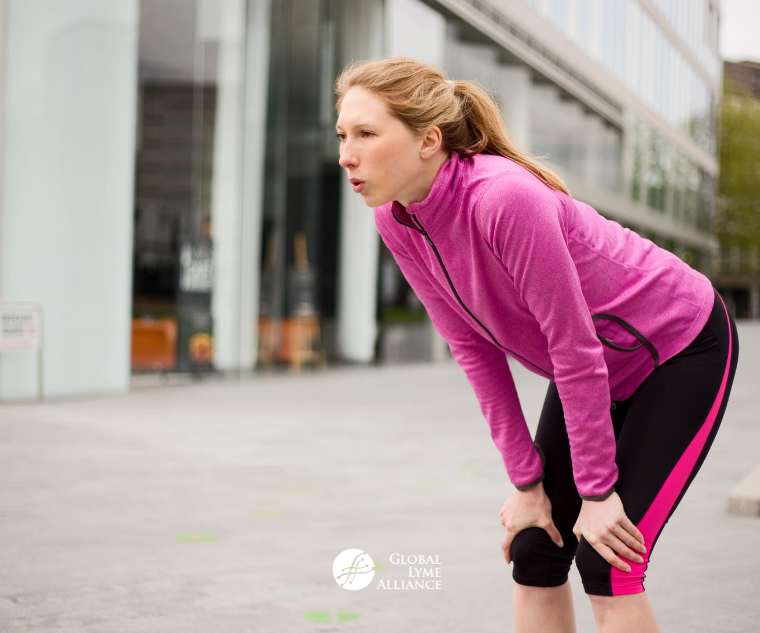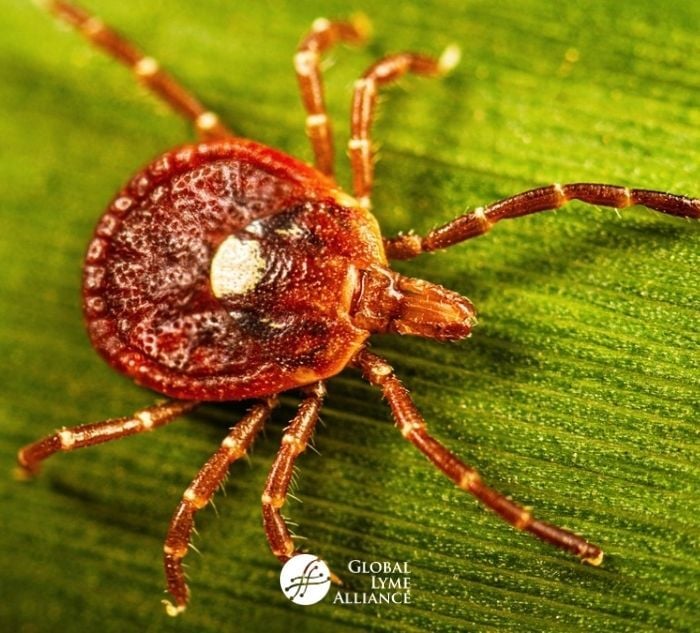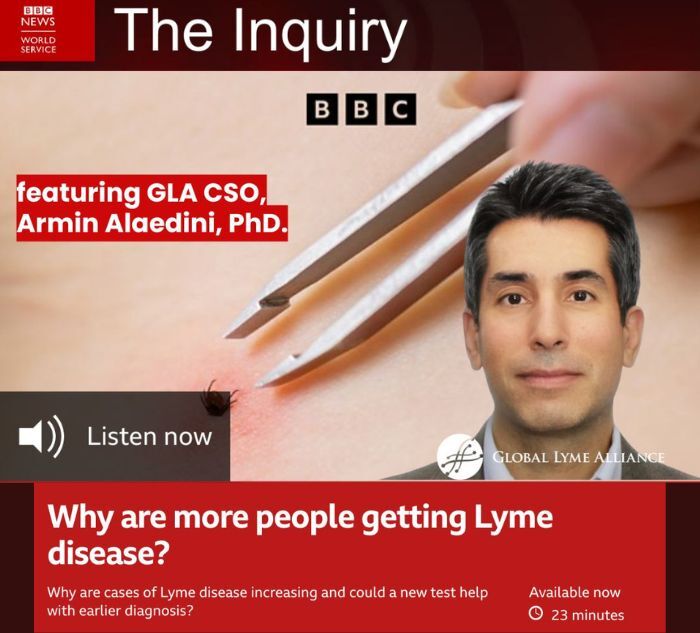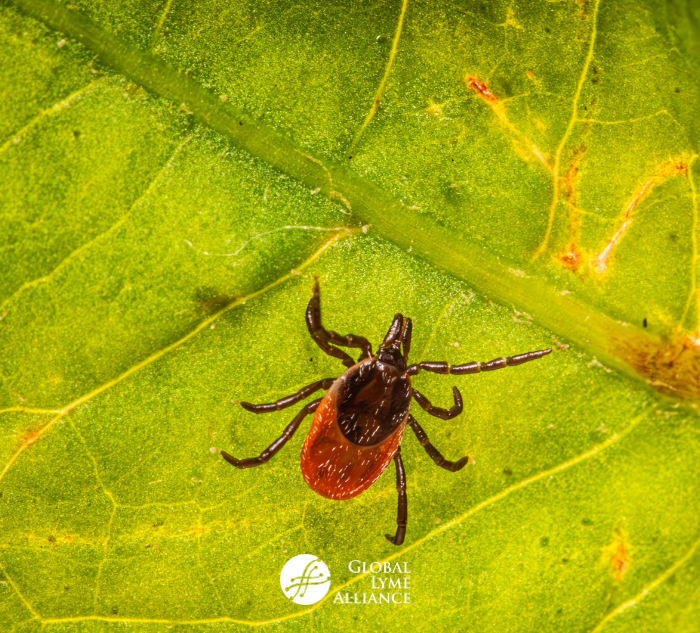
by Jennifer Crystal
Air hunger is a symptom of both COVID-19 and the tick-borne illness babesia. Let me tell you about my own experience with both.
During my April 2020 webinar on Lyme and COVID-19 with Daniel Cameron, M.D., one of the questions asked was whether COVID-19 worsened my babesia symptoms, including air hunger. The short answer is no. Though both illnesses affect oxygenation—COVID-19 is a respiratory illness, and babesia is a parasite that depletes oxygen from red blood cells—the air hunger caused by each is actually quite different.
Let me explain by telling you about my own experience with both.
I’ll start with babesia, since I’ve been wrestling that parasite since 1997—though I wasn’t diagnosed with it until 2005, at which time I started treatment. You can get Lyme and babesia, as well as other co-infections, from one tick bite, or you might get them from multiple ticks. It’s very likely that I got Lyme and babesia from one bite, since I developed symptoms of both illnesses at the same time. Symptoms of babesia can include high fever, fatigue (especially post-exertional fatigue, or the feeling of “hitting a wall” that marathon runners experience), low blood sugar, nausea, headaches, and air hunger.
That last symptom has been the most prevalent for me. When you hear the term air hunger, you might think of gasping for breath. But babesia air hunger doesn’t cause me to gasp from the lungs. Instead, my limbs and head seem to gasp; that’s because they are not getting properly oxygenated. In my “What Is Air Hunger, Anyway?” post, I explained, “Often my arms and legs would feel jumpy like I was having a panic attack. This is because they weren’t getting enough oxygen; the jumpiness was their way of “grumbling” like a stomach does when it needs food. My limbs felt, how can I put this? They felt empty, the opposite of the way they used to feel when they were pumped full of healthy oxygenated blood during exercise.” This air hunger caused fatigue—I’d feel the jumpiness just walking up a flight of stairs—as well as migraine headaches and blood sugar crashes. Anti-malarial medication helped quell but not eradicate the infection. I still sometimes get these symptoms, generally every six months or so, and then I know it’s time to do a short course of medication.
When I first got diagnosed with COVID-19, I worried that my babesia symptoms would immediately flare. But they did not. The air hunger I felt with COVID-19 was much more literal: my lungs gasped for air. I was short of breath, especially during the first few weeks of infection. Talking or moving around too much—just doing laundry or dishes—would leave me winded, wheezing, and coughing. Even when I was just sitting on the couch, my chest would sometimes get tight, and I would feel a soreness like a bruise in both the front and back of my lungs. Luckily, I never needed a ventilator. My pulse oxygen levels remained at a safe level (97-99) throughout my convalescence, though my peak flow (a measure of how well the lungs can expel air) was sometimes low.
An inhaler helped me manage my symptoms at home, but it has taken several months for them to resolve. The cough has decreased and shortness of breath has improved, but four months after getting sick, two months after my last fever, and one month since getting a positive COVID-19 antibody test, I still have some residual lung inflammation. I rarely cough now and can talk and exercise for longer stints. When at first I couldn’t even stand or walk a few feet without feeling tired, my energy is now just about back to my pre-COVID-19 baseline.
However, the shortness of breath and cough still flare if I push myself too hard. For example, last week I took a half-mile walk, including a steep incline, to a dock on the Charles River. I took a few breaks along the way and felt good when I arrived. I sat and rested on the dock for about half an hour, feeling fine. But partway through the half-mile walk home, my legs suddenly felt very heavy. My chest felt tight. I had run out of steam. By the time I got home, I was totally worn out. The next day, my shortness of breath was back, and I coughed for the first time in days. I had to increase the use of my inhaler.
The walk also riled up some of my babesia symptoms: my blood sugar crashed, and I experienced air hunger for several days. This brings us back to the question of whether or not having COVID-19 causes my babesia to flare? The short answer was no, and I believe that is the long answer, too. That is to say, my COVID-19 symptoms made that long walk difficult, and that may have sparked a reaction from the babesia in my body, but I know my body well enough to say that the babesia flareup had already been brewing.
If COVID-19 were going to affect my babesia, it would have done it a while ago—say, when I was acutely ill, or when I first got back to kayaking. I didn’t have any babesia symptoms during those times. In the last few weeks, though, I have experienced mild night sweats and lightheadedness. These symptoms simply increased after my long walk. Whereas I usually do my babesia maintenance protocol every six months, I’ve pushed it off because of COVID-19. Now, eight months since I last did a round of that medication, my body is telling me we’re overdue for a tune-up.
So, despite the overlap in timing, it still seems that in my particular case my COVID-19 symptoms and my babesia symptoms are independent of each other. The air hunger I experienced with each is distinct. I hope that my experience will help reassure other babesia patients who are concerned about what might happen if they get COVID-19.
Related posts:
What Is Air Hunger, Anyway?
Lyme and COVID-19 Panel: Follow-up Q and A

Opinions expressed by contributors are their own.
Jennifer Crystal is a writer and educator in Boston. Her memoir about her medical journey is forthcoming. Contact her at lymewarriorjennifercrystal@gmail.com.

Jennifer Crystal
Writer
Opinions expressed by contributors are their own. Jennifer Crystal is a writer and educator in Boston. Her work has appeared in local and national publications including Harvard Health Publishing and The Boston Globe. As a GLA columnist for over six years, her work on GLA.org has received mention in publications such as The New Yorker, weatherchannel.com, CQ Researcher, and ProHealth.com. Jennifer is a patient advocate who has dealt with chronic illness, including Lyme and other tick-borne infections. Her memoir, One Tick Stopped the Clock, was published by Legacy Book Press in 2024. Ten percent of proceeds from the book will go to Global Lyme Alliance. Contact her via email below.






-2.jpg)